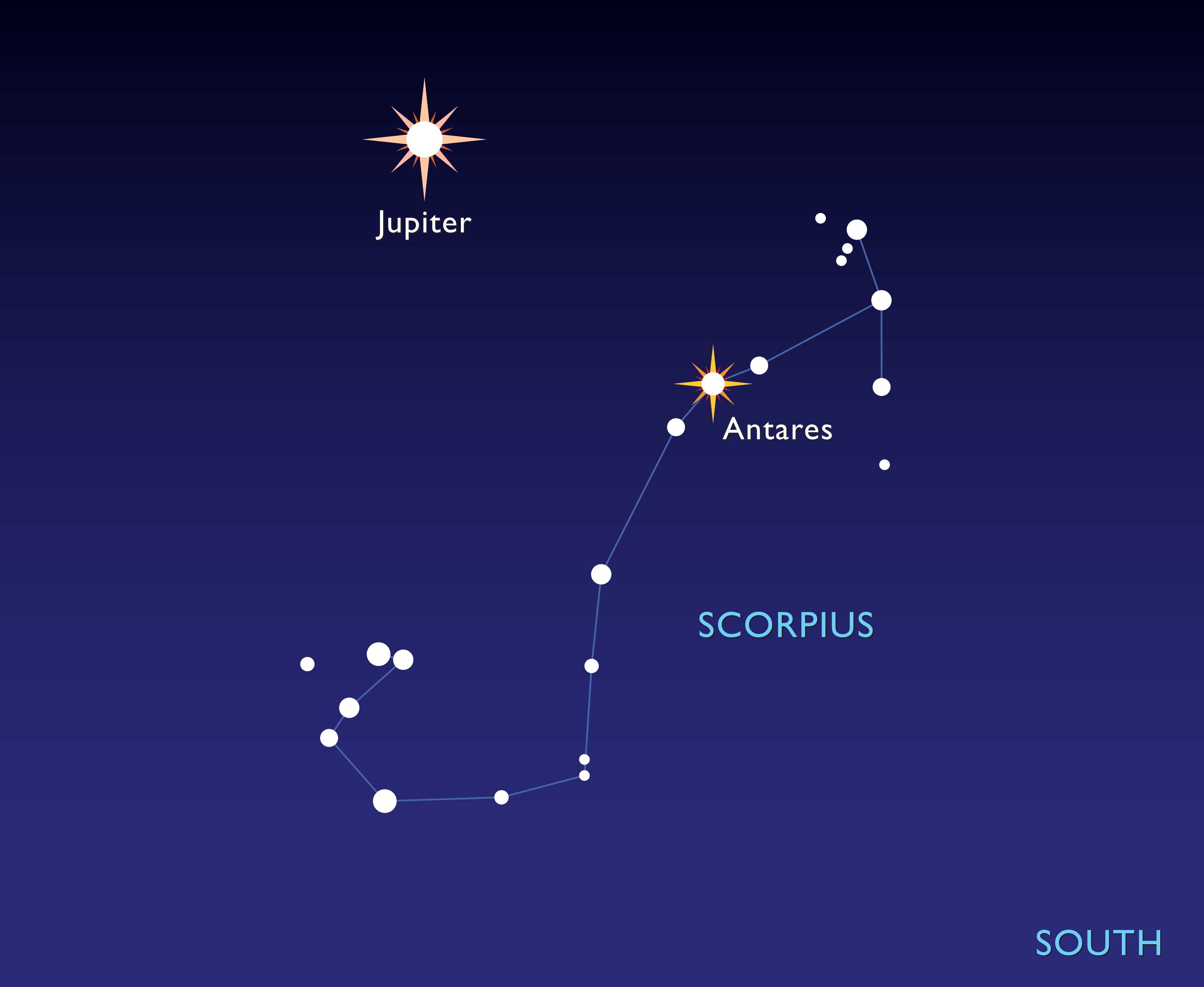Perhaps the most interesting planets in a small telescope are Jupiter and Saturn. These giant planets will be featured in our skies in the month of July and all summer. Both are very bright right now because the Earth is on the same side of the solar system as they are this month—that makes us about 180 million miles closer than if we were on the opposite side of our solar system.
To find Jupiter look in the southeast sky at dusk. Jupiter is currently the brightest object in the sky, other than the Sun and the Moon. It shines with a salmon orange color. If you are still in doubt, try going out on the nights on or around July 13 and the gibbous Moon will be very nearby.
Jupiter isn’t prone to “twinkling” as stars are. This is because Jupiter’s apparent disk has an angular size and the light reflected from the sun doesn’t pinch out as our Earth’s atmosphere distorts the light. Stars are so far away that they appear as points of light with no measurable angular width.
Jupiter is the largest planet in our solar system. At one-tenth the mass of the Sun, Jupiter could nearly be a star itself. In fact, Jupiter is sometimes called a “failed star” because it is largely comprised of hydrogen and helium like most stars.
Most stars we see in the night sky are solar systems that contain two or more stars; we are atypical in having only one sun. While Jupiter’s evolutionary path is very different from that of a star, perhaps this giant’s mass siphoned off enough mass during the creation of our solar system to keep any more stars from forming.
Both Jupiter and Saturn are gas giants. These are planets that probably have no discernable surface like the rocky planets on this side of the asteroid belt. The atmospheres just get denser and denser until they are liquid hydrogen. Like diving into the ocean with a face mask, the pressure increases the deeper you dive. Because of the incredible gravity of this massive planet, the pressure continues to increase until the liquid hydrogen actually becomes metallic hydrogen. By Jove, imagine that!
Jupiter is a lovely sight in a small telescope. It presents a decent sized disk that bulges along the equator and shows bands or belts of clouds that are striped along the lines of latitude. This is because of Jupiter’s incredibly fast day, or rotational period, that completes a full rotation in about 10 hours. Given Jupiter’s size and mass, this causes the Jovian giant to bulge along his equator. This is easily detectable in a small telescope.
Another striking feature are the four bright moons that weave around the planet in roughly a straight line. Europa, Calisto, Io, and Ganymede all orbit Jupiter at a high rate of speed and a careful observer will see the pattern change over the course of an evening. Don’t be alarmed if you don’t see all four moons when you first look at Jupiter. Such was the case when Galileo first pointed his primitive twenty-power telescope at Jupiter on January 7, 1610, and only noted three. One or more moons may be eclipsed, occulted, or in transit across the disk of Jupiter. These phenomena are fun to watch, especially the transits, as a careful observer can find the moon and its shadow crossing the face of Jove, the God of the Sky.
The giant Jovian planet will be near the constellation of Scorpius for much of the summer. The bright, distinctly reddish star nearby is Antares. That name Antares is derived from the ancient Greek and means “rival of Mars.”
We will explore Scorpius next time along with another rising “star” in this summer’s sky, Saturn.
Questions and comments can be sent to: backyardastronomer365@gmail.com.


